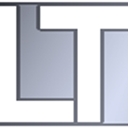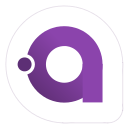Top PyQt Alternatives for Python GUI Development
PyQt is a widely used set of Python bindings for the Qt application framework, enabling developers to create powerful graphical user interfaces (GUIs) across various platforms like Windows, macOS, Linux, iOS, and Android. It boasts over 1,000 classes and supports both Python 2 and 3. While PyQt offers robust capabilities, its dual licensing under GNU GPL v3 and the Riverbank Commercial License (without an LGPL option) can be a limiting factor for some projects. This often leads developers to seek out a suitable PyQt alternative that aligns better with their licensing needs, project requirements, or preferred development paradigms.
Top PyQt Alternatives
If you're looking to build compelling Python GUIs but find PyQt's licensing or feature set not quite right for your project, a variety of excellent alternatives are available. Each offers unique strengths in terms of platform support, licensing, and specific functionalities, making it crucial to select the one that best fits your development goals.

GTK+
GTK+ is a prominent multi-platform toolkit for creating graphical user interfaces, offering a comprehensive set of widgets suitable for diverse projects. It's an excellent open-source PyQt alternative available on Free, Mac, Windows, Linux, and Chrome OS, providing robust cross-platform development tools.

wxWidgets
wxWidgets is a C++ library that enables developers to create cross-platform applications for Windows, OS X, Linux, and UNIX. As a Free and open-source solution, it serves as a powerful PyQt alternative, especially for those working with Python and Ruby due to its extensive bindings.

Kivy
Kivy is a Free and open-source Python library designed for the rapid development of multi-touch enabled media-rich applications. It's a fantastic PyQt alternative for projects requiring multi-touch capabilities and OpenGL rendering, supporting Mac, Windows, Linux, Android, and iPad platforms.

PySide
PySide provides LGPL-licensed Python bindings for the Qt cross-platform application and UI framework, making it a direct and often preferred PyQt alternative, particularly for those needing a more permissive license. It's Free, open-source, and supports Mac, Windows, and Linux, offering Python bindings similar to PyQt.

FLTK
The Fast, Light Toolkit (FLTK) is a cross-platform graphical user interface library known for its lightweight nature. As a Free and open-source PyQt alternative, FLTK is ideal for projects where resource efficiency is paramount, supporting Mac, Windows, and Linux.

TK
Tk is a Free and open-source, cross-platform widget toolkit that provides a library of basic elements for building GUIs. It's a foundational PyQt alternative, often bundled with Python as Tkinter, and runs on Mac, Windows, Linux, and BSD.

wxPython
wxPython is a robust GUI toolkit for the Python programming language, allowing developers to create highly functional graphical user interfaces. As a Free and open-source PyQt alternative, it provides a comprehensive set of widgets and runs seamlessly on Mac, Windows, and Linux.

Avalonia
Avalonia is a WPF-inspired cross-platform XAML-based UI framework, providing a flexible styling system and supporting a wide range of OSs. It's a Free and open-source PyQt alternative for creating modern GUIs on Windows (.NET Framework, .NET), Linux, and Mac, often used with Microsoft Visual Studio.

Nana C++ Library
Nana C++ Library focuses on ease-of-use and portability, providing a GUI framework and threads for modern C++ development. This Free and open-source library serves as a robust PyQt alternative for Windows and Linux users, offering powerful developer tools.

Agar
Agar is a modern open-source, cross-platform toolkit for graphical applications implemented in C, C++, and Ada. It's a versatile Free and open-source PyQt alternative designed for developer tools, supporting Windows, Linux, and BSD platforms.
Choosing the best PyQt alternative depends heavily on your specific project requirements, preferred programming language, licensing considerations, and target platforms. Each of the options listed above offers unique advantages, from lightweight design to extensive multi-touch capabilities. We encourage you to explore these alternatives further to find the perfect fit for your next Python GUI development endeavor.